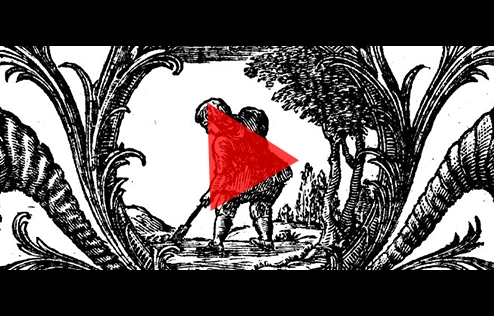1
Ðức Giê-hô-va phán cùng Môi-se rằng:
2
Ngày mồng một tháng giêng, ngươi sẽ dựng đền tạm.
3
Hãy để trong đó cái hòm bảng chứng, rồi lấy màn phủ lại.
4
Cũng hãy đem bàn đến, chưng bày các đồ trên bàn cho có thứ tự, cùng chân đèn và thắp các đèn;
5
cũng hãy để bàn thờ bằng vàng dùng xông hương trước hòm bảng chứng, rồi xủ tấm màn nơi cửa đền tạm.
6
Cũng hãy để bàn thờ về của lễ thiêu đằng trước cửa đền tạm;
7
và để cái thùng ở giữa khoảng hội mạc và bàn thờ; rồi đổ nước vào;
8
lại chừa hành lang chung quanh và xủ tấm màn nơi cửa hành lang.
9
Ðoạn, ngươi hãy lấy dầu xức mà xức đền tạm và các đồ để trong đó; biệt riêng đền tạm ra thánh, thì sẽ làm thánh vậy.
10
Cũng hãy xức dầu bàn thờ về của lễ thiêu, và các đồ phụ tùng của bàn thờ; rồi biệt riêng ra thánh, thì bàn thờ sẽ làm rất thánh.
11
Cũng hãy xức dầu cho thùng và chân thùng; biệt thùng riêng ra thánh.
12
Ðoạn, hãy dẫn A-rôn cùng các con trai người đến gần cửa hội mạc, rồi tắm họ trong nước.
13
Ngươi hãy mặc áo thánh cho A-rôn, xức dầu và biệt người riêng ra thánh; vậy người sẽ làm chức tế lễ trước mặt ta.
14
Hãy dẫn các con trai người đến gần, rồi mặc áo lá cho họ;
15
xức dầu cho như ngươi đã xức cho cha họ, thì họ sẽ làm chức tế lễ trước mặt ta. Sự xức dầu sẽ phong cho họ chức tế lễ mãi mãi trải qua các đời.
16
Môi-se làm y như mọi điều Ðức Giê-hô-va đã phán dặn mình.
17
Ðến ngày mồng một tháng giêng về năm thứ hai, thì đền tạm đã dựng.
18
Môi-se dựng đền tạm, để mấy lỗ trụ, đóng ván, thả xà ngang và dựng trụ.
19
Người căng bong trên đền tạm, rồi trải lá phủ bong lên trên, y như lời Ðức Giê-hô-va đã phán dặn Môi-se.
20
Ðoạn, người cũng lấy bảng chứng, để trong hòm, xỏ đòn khiêng vào, để nắp thi ân lên trên hòm.
21
Người khiêng hòm vào đền tạm và treo màn để che chỗ chí thánh, phủ hòm bảng chứng lại, y như lời Ðức Giê-hô-va đã phán dặn Môi-se.
22
Người cũng để cái bàn trong hội mạc, về phía bắc đền tạm ở ngoài bức màn;
23
rồi sắp một hàng bánh ở trên, trước mặt Ðức Giê-hô-va, y như lời Ngài đã phán dặn Môi-se.
24
Ðể chân đèn trong hội mạc về phía nam, đối diện cùng cái bàn.
25
Người thắp đèn trước mặt Ðức Giê-hô-va, y như lời Ngài đã phán dặn Môi-se.
26
Ðể bàn thờ bằng vàng trước bức màn trong hội mạc;
27
trên đó người xông hương, y như lời Ðức Giê-hô-va đã phán dặn Môi-se.
28
Người cũng xủ màn nơi cửa đền tạm.
29
Ðoạn, người để bàn thờ về của lễ thiêu nơi cửa đền tạm, dâng trên đó của lễ thiêu và của lễ chay, y như lời Ðức Giê-hô-va đã phán dặn Môi-se.
30
Cũng để thùng về giữa khoảng hội mạc và bàn thờ, cùng đổ nước vào đặng tắm rửa;
31
Môi-se, A-rôn cùng các con trai của A-rôn, rửa tay và chân mình vào đó.
32
Khi nào họ vào hội mạc và lại gần bàn thờ thì rửa mình, y như lời Ðức Giê-hô-va đã phán dặn Môi-se.
33
Chung quanh đền tạm và bàn thờ, người cũng chừa hành lang, và xủ màn nơi cửa hành lang. Ấy, Môi-se làm xong công việc là như vậy.
34
Áng mây bao phủ hội mạc và sự vinh hiển của Ðức Giê-hô-va đầy dẫy đền tạm,
35
cho đến nỗi Môi-se vào chẳng đặng, vì áng mây bao phủ ở trên và sự vinh hiển của Ðức Giê-hô-va đầy dẫy đền tạm.
36
Vả, trong các sự hành trình của dân Y-sơ-ra-ên, khi nào áng mây từ đền tạm ngự lên thì họ ra đi;
37
còn nếu áng mây không ngự lên thì họ cũng không đi, cho đến ngày nào áng mây ngự lên.
38
Vì trong các sự hành trình của dân Y-sơ-ra-ên, thì áng mây của Ðức Giê-hô-va ở trên đền tạm ban ngày, và có lửa ở trên đó ban đêm hiện trước mặt cả dân Y-sơ-ra-ên.







